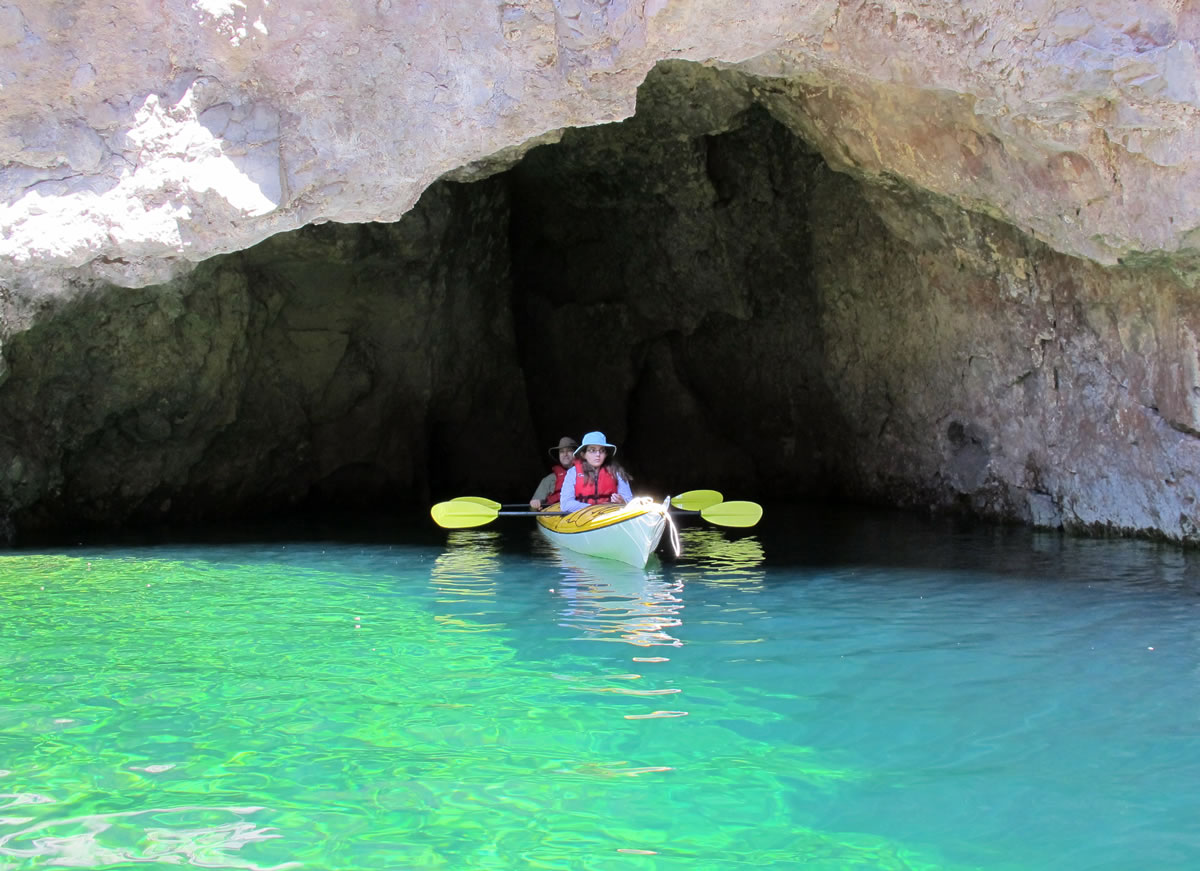BOULDER CITY, Nev. — It’s easy to trade the wild ways of Las Vegas for the wilds of the nearby Colorado River: All it takes is a call to a boating outfitter and a federally-approved form of ID.
That’s because the overnight float trips in the Black Canyon put in just below the Hoover Dam, 30 miles southeast of Las Vegas. The massive power plant, which produces enough electricity for 1.3 million people, is in a security zone enforced by its own federal police force.
Those wanting to paddle this stretch of river must have a launch permit, and traffic is limited to 30 boats per day. The permits are available up to six months in advance and are generally obtained through a government-approved outfitter.
That was fine with me, since for about $350 per person, the operator also provided transportation, a guide, high-quality kayaks, camping gear, dry bags, life jackets and food. All we needed to bring were a change of clothes, hats, sunscreen and our passports, driver’s licenses or birth certificates.
Our adventure started early. We were picked up at our hotel on the Las Vegas strip at 6 a.m., but with driving time, a stop to pick up the boat trailer, and the security check in Boulder City, it took about two hours before we were in our kayaks, gazing up at the 700-foot-high dam.
Some outfitters take groups of 10 people or more, but my husband, my daughter and I got a private trip, as no one else had signed up. We launched at the same time as a group of 20 Boy Scouts, but they canoed off quickly and were soon out of sight.
The scenery in the gorge was spectacular. Facing downstream, Nevada was to our right, Arizona to our left, and stretching out in front were high canyon walls and a ribbon of gently flowing green water.
The standard two-day trip down the Lower Colorado River covers about 12 miles within the Lake Mead National Recreation Area. Spring and fall are the most popular times. When we visited in April, it took some doing to find a place to camp that was private, but in the end, we had a spit of land that we shared only with some chuckwalla lizards.
The diversity of activities also helps disperse the crowds. There are miles of hiking, hidden hot springs, waterfalls, historic ruins, caves, and critters to be found along the way.
The first half of the trip offers the most spectacular scenery, and the most interesting activities. Here, many of the walks involve scrambling up steep rocks — sometimes in running water — and several sites are fixed with permanent ropes to help explorers haul themselves up.
At the Sauna Cave, using flashlights provided by our guide, we penetrated about 50 feet into a shaft drilled by miners working on the dam until they hit a geothermal vent. Between the 130-degree steam and the hot water underfoot, our visit was brief.
Other places to explore have names like Gold Strike Canyon, Lone Palm Canyon and Boy Scout Canyon. Each offers something different, making each worth the stop.
The approximate midway point is the Arizona Hot Springs Beach. This is one of the few sites accessible on foot from Highway 93.
We stopped there only briefly, to purify enough river water to fill our water bottles. We were facing a strong headwind and wanted to cover more distance to ensure we could reach the take-out point in time to meet the shuttle the following day.
When we finally made camp in the lee of boulder on a gravel wash with no name, our guide started unloading gear: tents, pillows, sleep pads and camp chairs). A gas stove allowed him to cook steak, veggies and rice for dinner, and metal roasting forks and marshmallows completed the repast.
The next day, the river widened and so did the view. We passed under cable cars and a catwalk built in the 1930s for the men who crossed the river to the gauging station, also still visible, where water levels, flow rates and quality were monitored.
At the Emerald Cave, we waited our turn while those who had paddled upstream for the day explored the iridescent hollow. It was worth the wait, offering respite from the sun and a tremendous photo opportunity.



